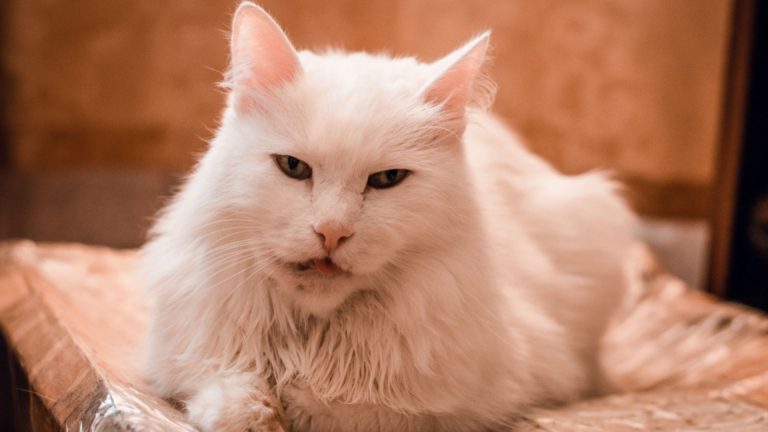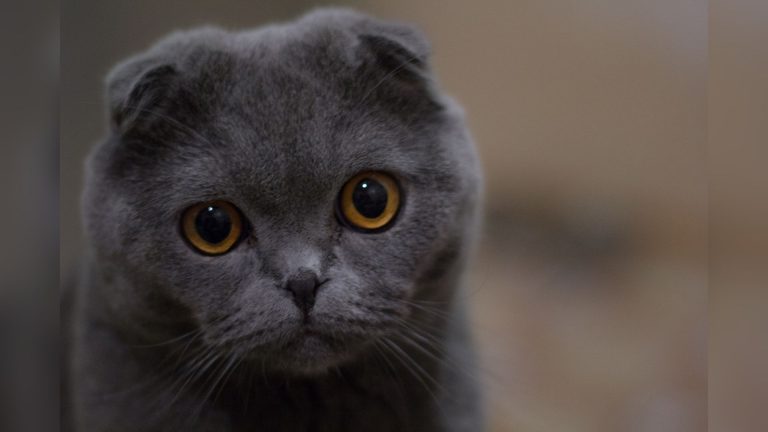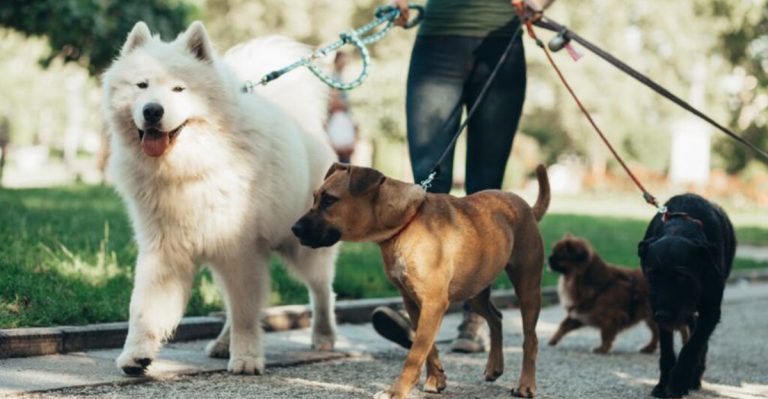Beyond Ordinary: 23 Rare Cat Coat Colors & Patterns
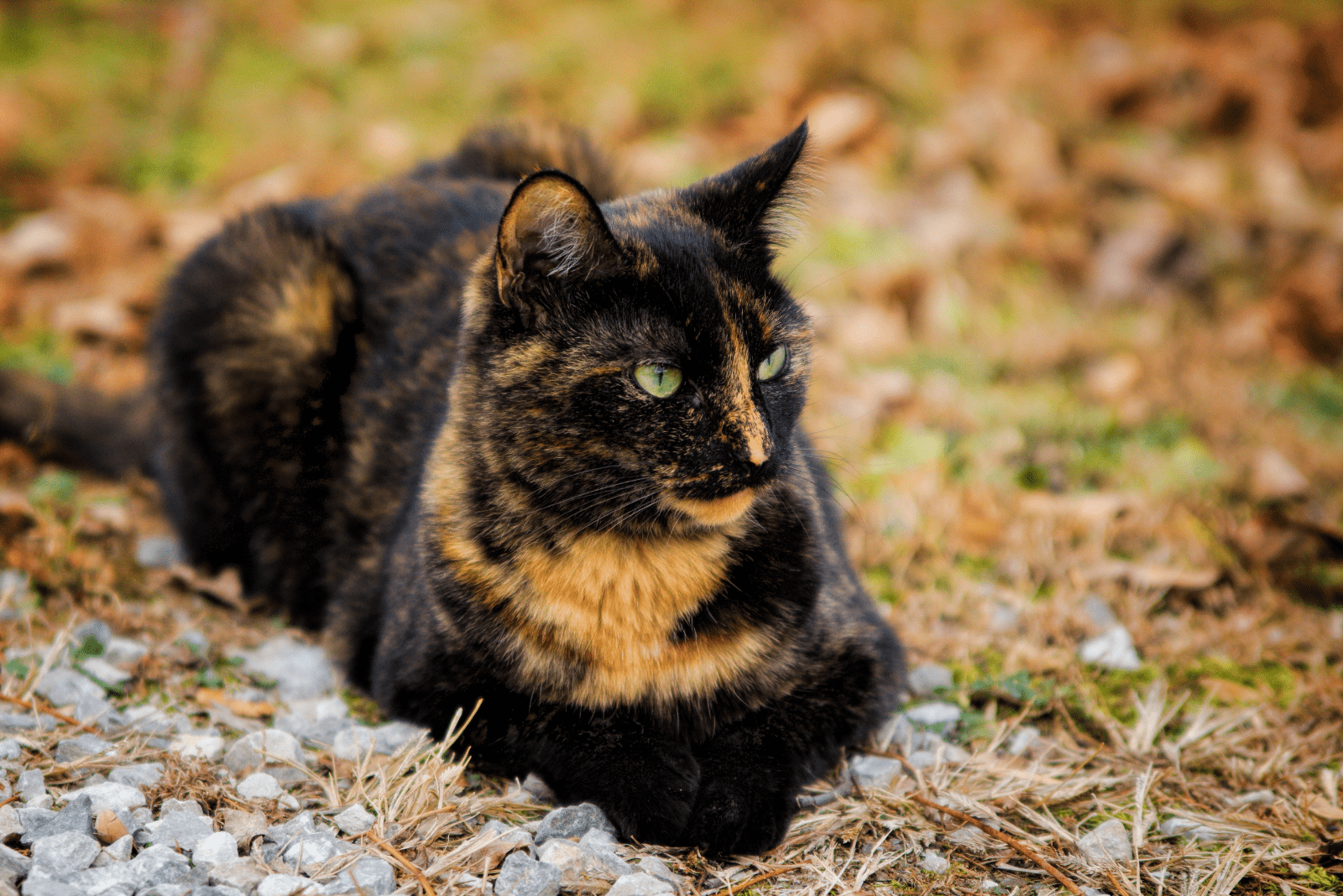
When you’re walking down a street and see a cat with an extremely rare color or pattern, do you stop for a second and admire how beautiful they are? I certainly do! The same thing happens when I scroll Instagram, if I see a beautiful and rare cat, I find myself just staring at it in awe.
There truly is a lot of versatility in the cat world – it seems like there are a million different coat colors and patterns! Of course, some are more rare than others.
Cats with an extraordinarily rare coat color and pattern are the celebrities of the cat world! Their coats are very distinctive and absolutely stunning, so much so that you simply have to take a second look.
In this article, I will show you some amazing cats with rare coat colors and patterns, many of which you will never have seen before, so scroll on!
Rare Cat Colors & Patterns
We can thank each cat’s unique genetic background for the amazing combination of different colors, hues and patterns visible on their beautiful coats!
Genetic combinations play a key role in determining the color and pattern of a cat’s coat. Selective breeding has produced many uncommon hues, particularly in pure breeds that have been cultivated for their unusual appearance.
Some Basic Facts From Cat Genetics
For a specific gene, a cat will receive one allele (gene variant) from the mother, and one allele (gene variant) from the father.
The mother and father together contribute two alleles, which can either be dominant or recessive.
Dominant alleles are those that will have influence no matter if the second allele is a dominant or a recessive one. On the other hand, recessive alleles have to be present in pairs in order for the recessive trait to occur.
Melanin, a type of pigment, controls the hues of a cat’s coat. The two structural parts of melanin are eumelanin, which generates brown and black tones, and pheomelanin, which gives fur red and yellow coloration.
Lighter variations of the dominant cat coat colors are genetically caused by dilution genes, which turn black into gray, chocolate into lilac, and orange into a cream color.
Top 23 Stunning And Rare Cat Colors & Patterns
Let’s go through this article as artists – simply looking at the colors and patterns and being mesmerized by them! I will sprinkle a little bit of biology and genetics here and there, along with some additional fun facts that help explain why a cat has a specific color or coat pattern.
Let’s jump right in!
1. Albino
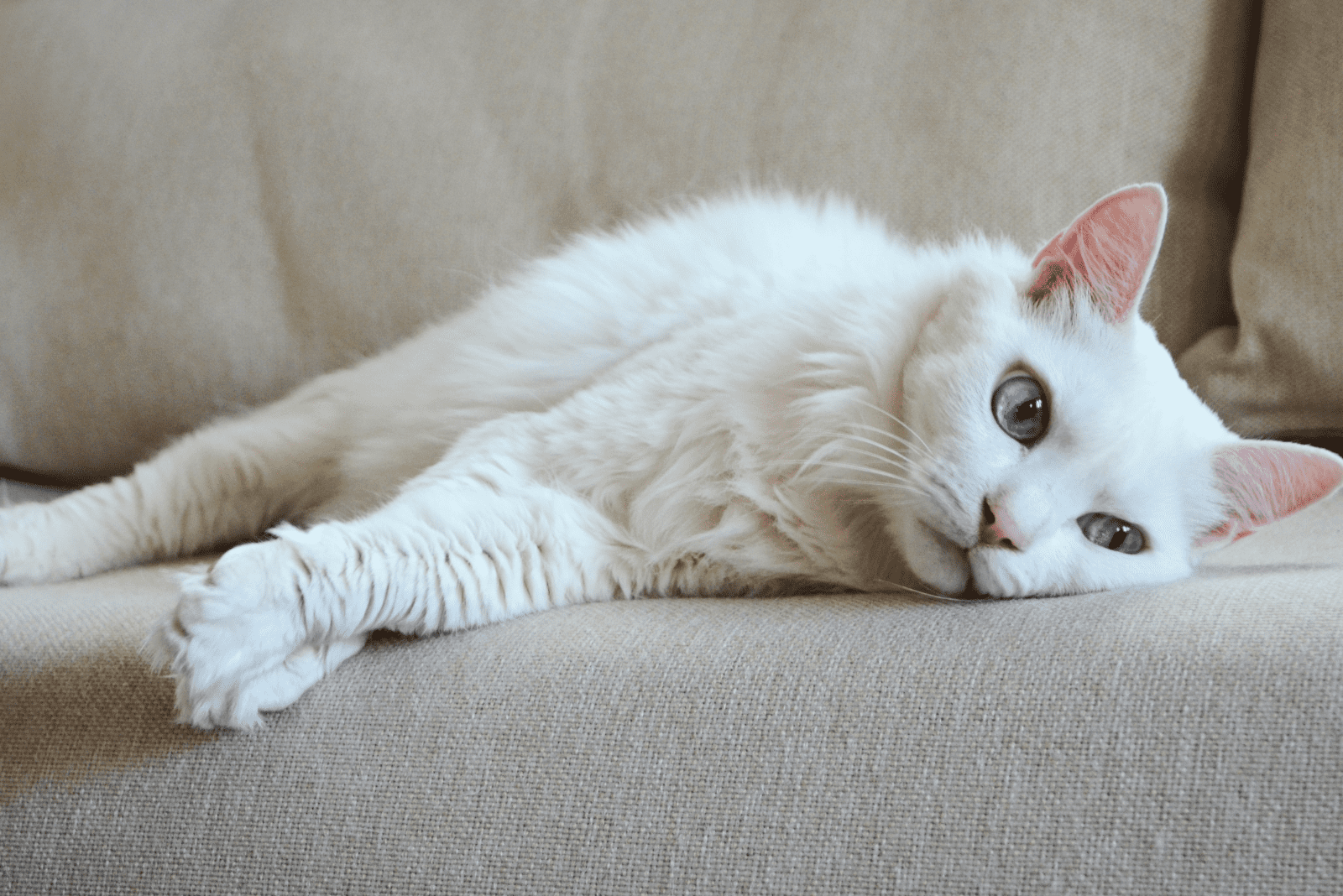
The albino cat is the rarest type of coat. Complete albinism is caused by two recessive alleles in the C gene, and cats are highly unlikely to have both of these alleles.
These cats should avoid the sun to safeguard their distinctive albino blue eyes. The sun can also harm their skin, particularly around the nose and ears.
2. Taupe
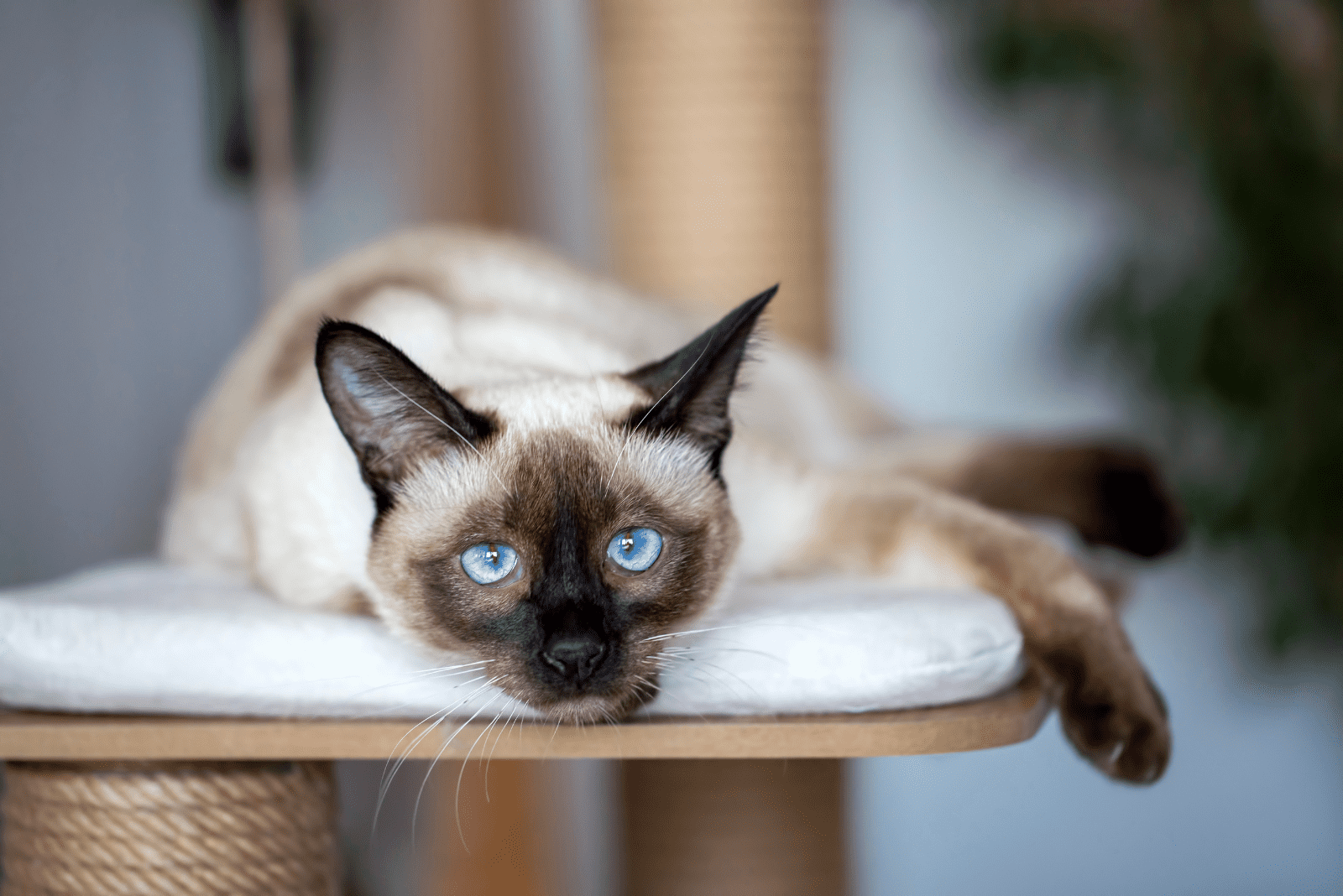
Dm, or a “dilute modifier” gene is a gene that has effects that are more noticeable when the cat’s color is already dilute. Essentially, this gene will modify (wash out) the already diluted color pigment.
Taupe is a modified blue, and blue is a dilute black color.
This Dm gene is usually only found in English Balinese and Siamese cats, so you’re highly unlikely to see any other cat with this coat color.
3. Apricot
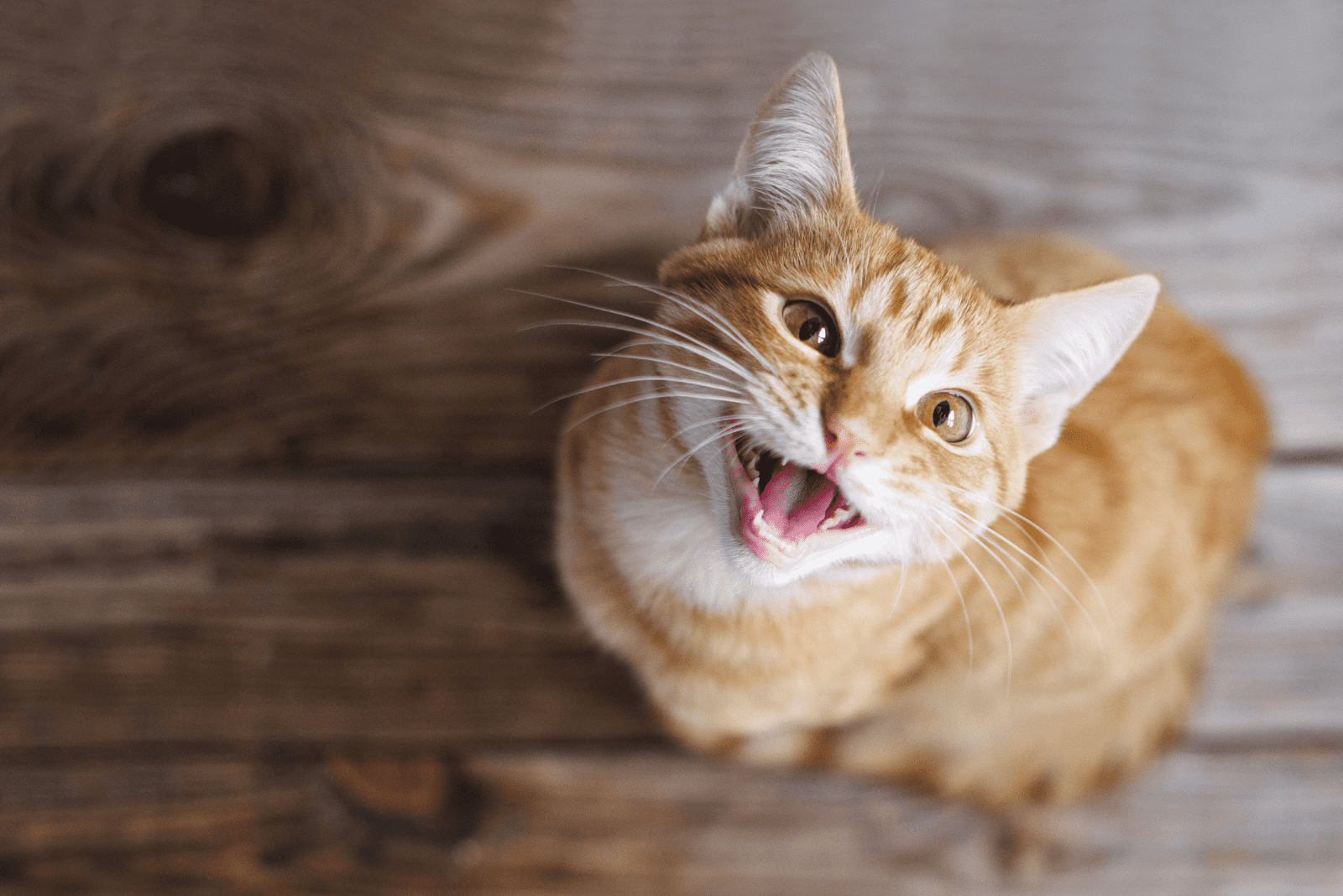
The same diluted modifier that causes a taupe coat color also causes apricot, but on a cream color.
Apricot is an almost-white cream color. This is because the dm gene has two d alleles, which causes further washing out – or dilution – of the pigment.
4. Caramel
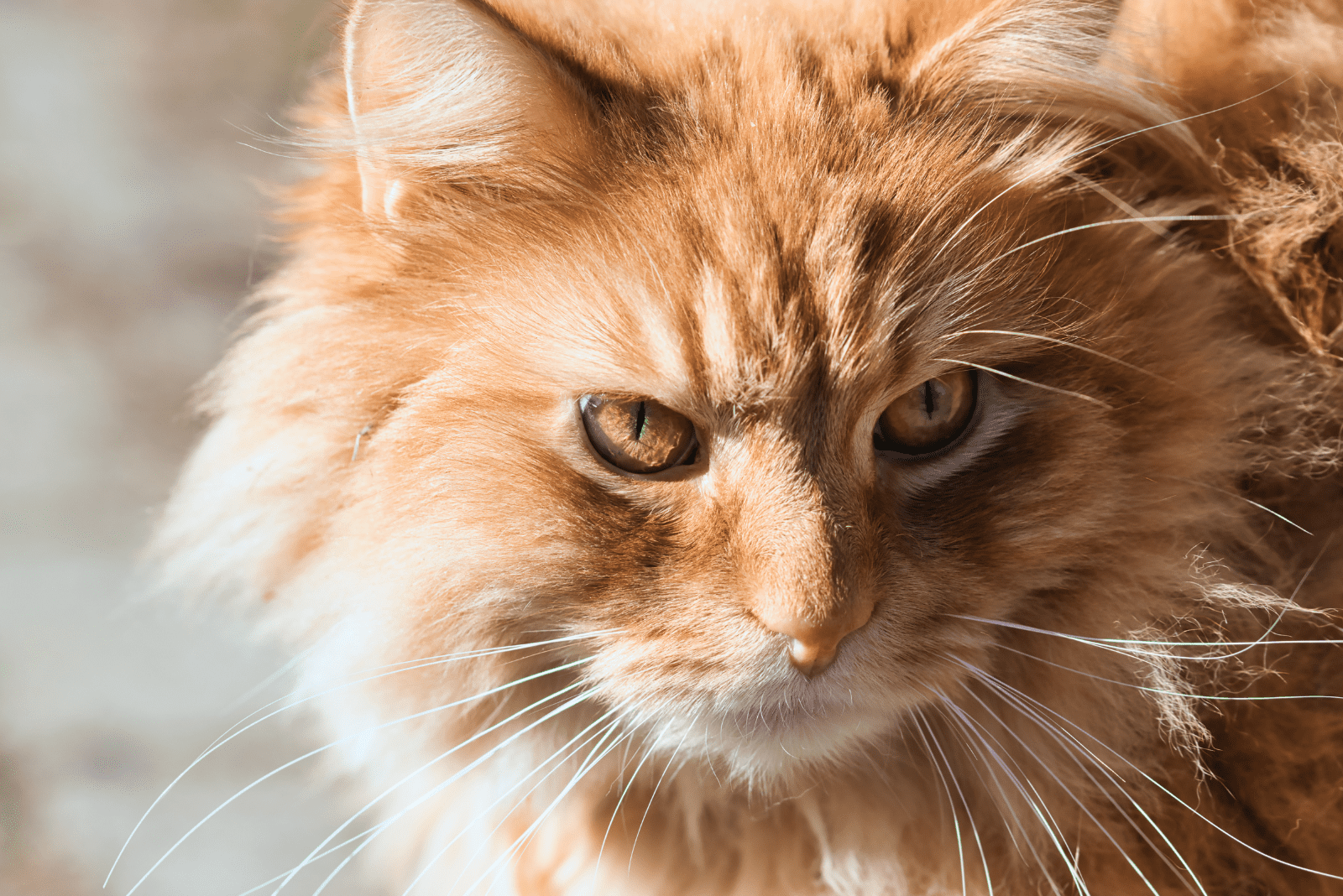
Caramel appears to be a light gray color, but it is actually a modified lilac coat color. This is the result of the “dilute modifier gene”, the same gene that modifies cream to apricot, and blue to taupe.
As you can see, only cats who are homozygous for the dilute gene, will have their color altered.
5. Blue
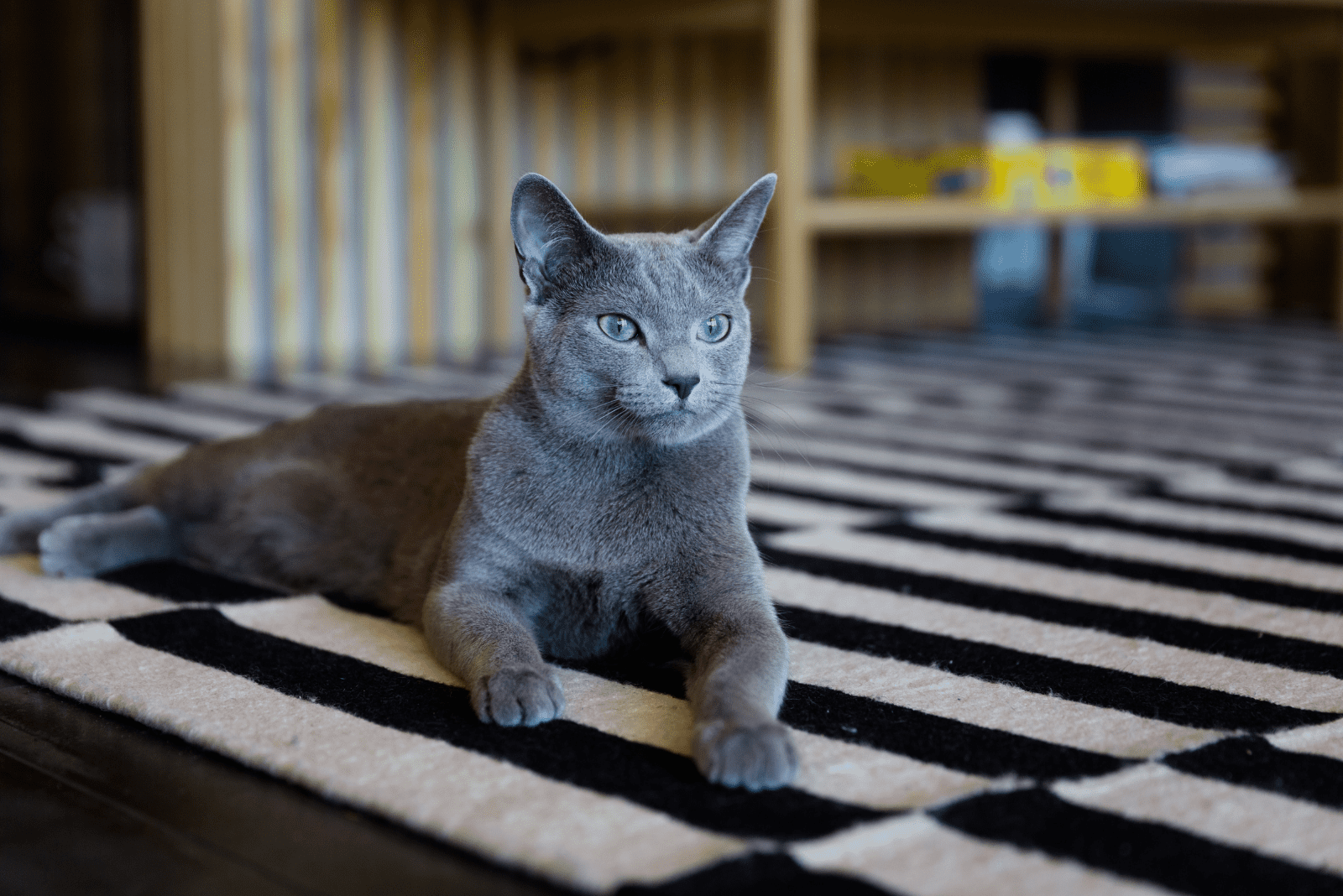
Blue is a diluted form of black, resulting in a gray-colored coat. This coat color is particularly beautiful in longhaired gray cat breeds like the Norwegian forest cat, where the color is on full impressive display for everyone to see.
Solid blue cats are extremely rare in the cat world. They can be of various shades ranging from light blue-gray to dark slate. The Russian blue cat has a solid blue coat coloration. Apart from its magnificent short blue-gray coat, this cat also has brilliant green eyes.
Related: What’s So Interesting About Blue Maine Coon Cats?
6. Lilac

If a chocolate-colored cat has the dilute gene, the effect is that the chocolate is lightened to a lilac (or lavender) tone. Some describe it as a gray color with a pinkish tone.
In certain light, the undercoat’s pinkish undertone can be seen. This color of cat typically has a lilac-pink nose and paw pads.
For this color to occur, a cat must receive the recessive dilute gene and the recessive chocolate gene from both parents, so this hue is extremely uncommon.
7. Fawn
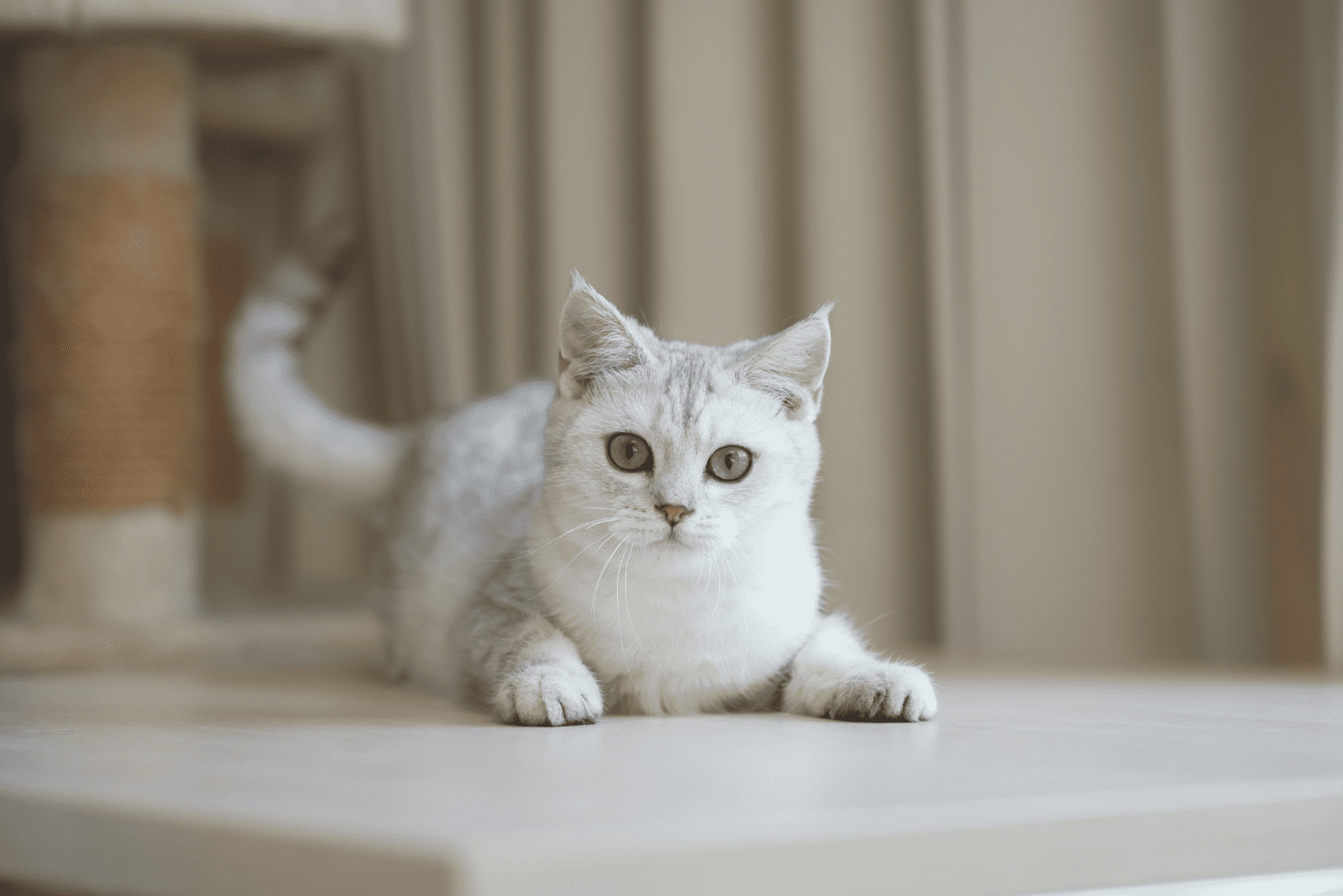
Fawn is a variant of cinnamon, which is caused by a recessive gene called the dilution gene. It creates a lighter shade of brown than lilac and is diluted with brown. Some also call this color beige.
The Oriental and British Shorthair breeds are the most common carriers of non-agouti cinnamon and fawn hues.
8. Cream
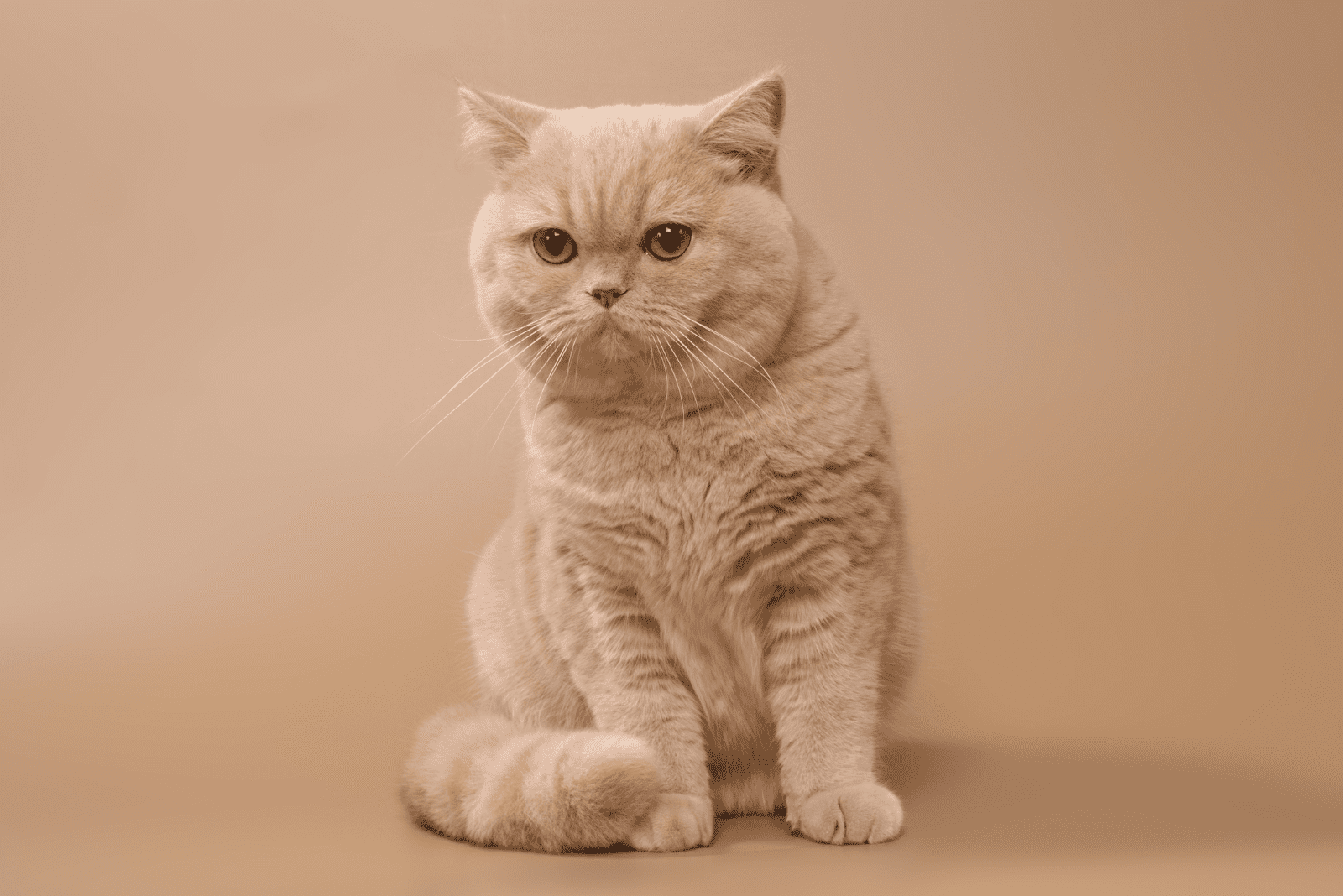
The color of this cream coat is a diluted red that is light but has a little rusty undertone. Cream is unusual in mixed-breed cats, as it is with the majority of the other dilutions, but is becoming increasingly prevalent in purebred cats.
Cream-colored cats have an orange color variant that is attenuated by a dense pigment gene and controlled by a red gene. The presence of red variants in the fur color is determined by this red gene, which is located on the X chromosome.
9. Cinnamon
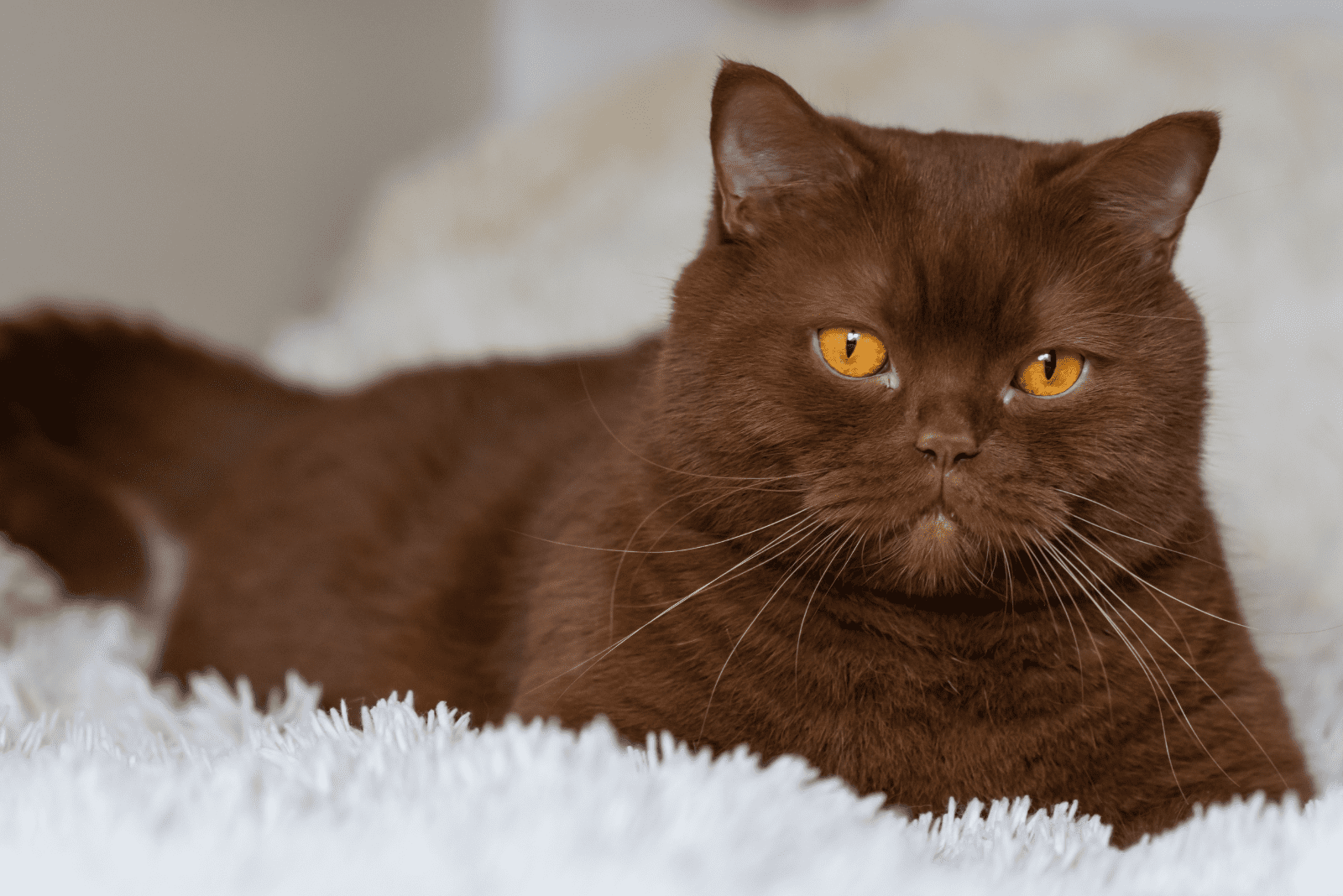
The cinnamon coat color is a lighter reddish-brown color, best compared to the hue of a cinnamon stick.
The cinnamon gene has been around for a very long time, despite being a relatively recent introduction into the standards of many breeds. The Abyssinian breed has the earliest record of the cinnamon gene, and it is thought that this breed is where the gene first appeared.
10. Chocolate

The gene responsible for producing a black coat produces a chocolate color when diluted.
While certain varieties, like the Balinese and Siamese, might have a chocolate color as points, the Havana Brown is a breed that has the distinction of being solid chocolate.
If you want to see other adorable brown kitties, I suggest reading: 16 Brown Cats That Will Leave You Speechless (With Pictures)
11. Black Smoke
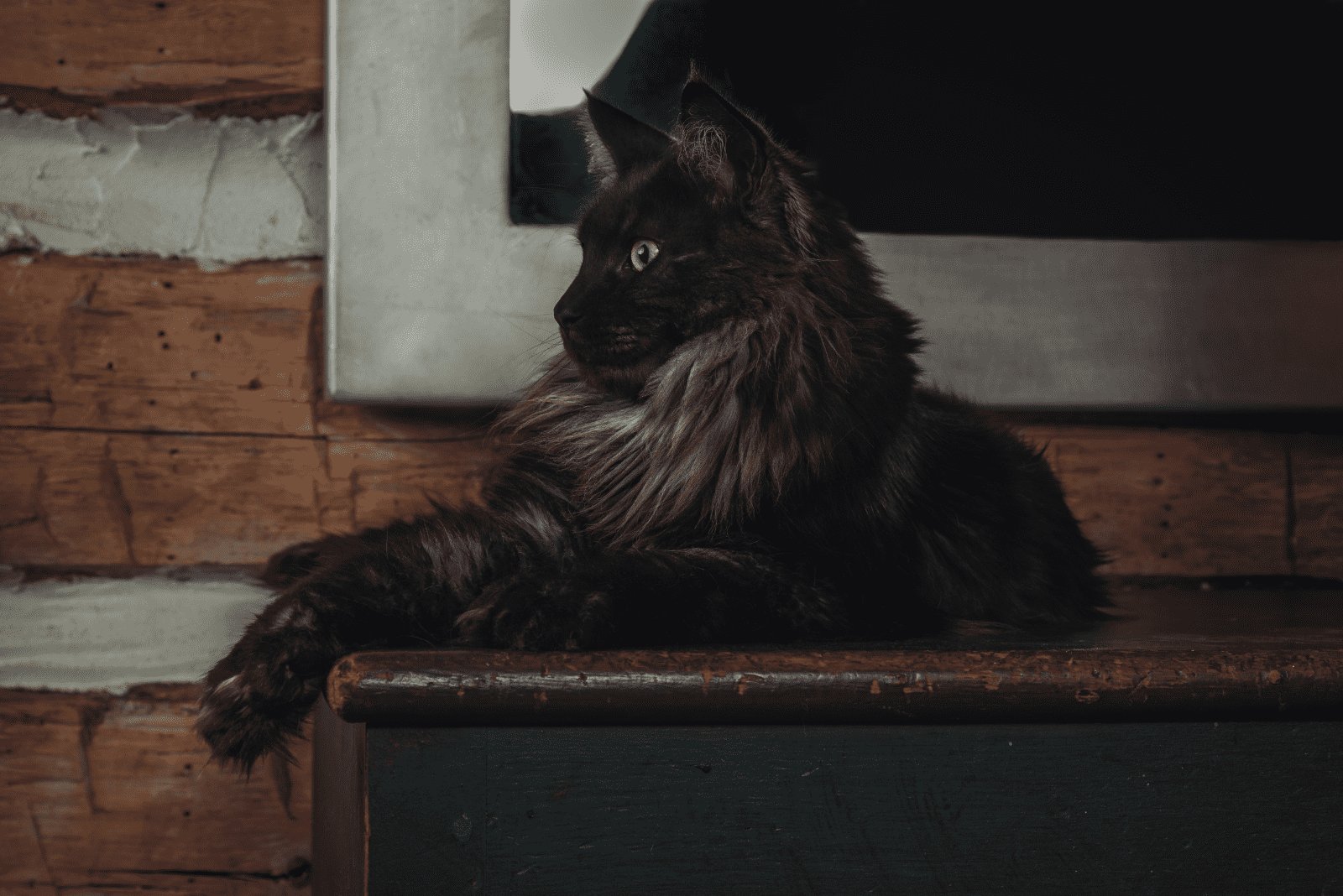
For a cat to be considered a black smoke cat, the portion of the hair strand that is closest to the skin should be entirely white, whereas the portion on the outside should be entirely black.
This produces a very intriguing effect because they only show their white layer when they move or when you pet them and get a close-up view of their coat.
Long-haired breeds make it easier to spot because the transition from white to black fur is considerably more pronounced. However, shorthair cats can have this smoke effect too.
12. Color Point
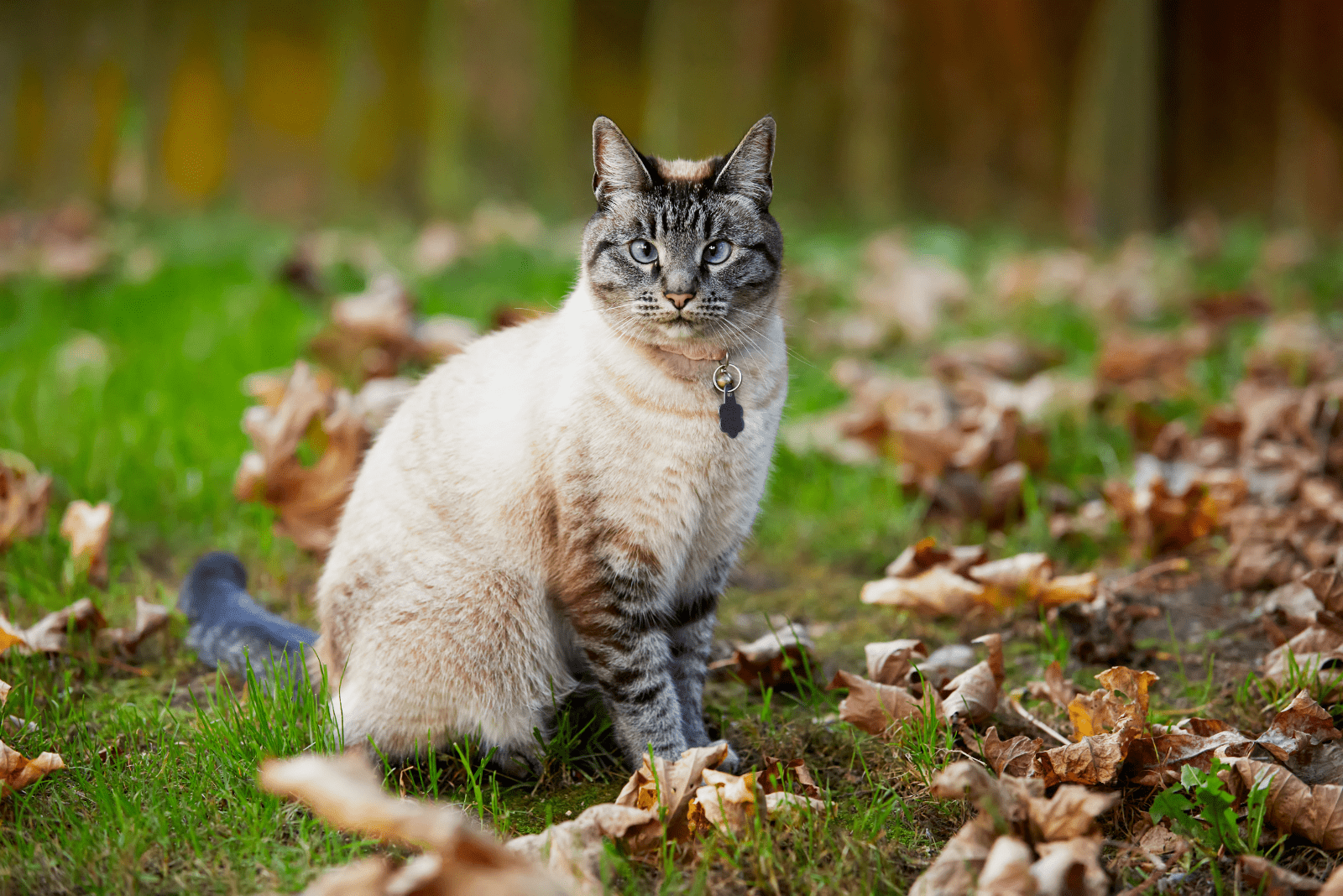
Usually brown or black, the color on the ‘points’ of the cats’ body is more intense where the body is cooler.
The faces, ears, paws, and tail are typically darker than the rest of the body in cats with the color point pattern. Tabby color points are sometimes called “lynx”. The Lynx point Siamese cat is a great example!
Cat breeds you can see with this pattern include the Siamese, Birman, Oriental shorthair, Balinese, Himalayan, Burmese and Ragdoll (the chocolate point Ragdoll is my favorite!)
If you want to see one rare color point cat, check out this article: Cat Lovers Are Going Cray For Blue Point Siamese Cats
13. Blue Smoke
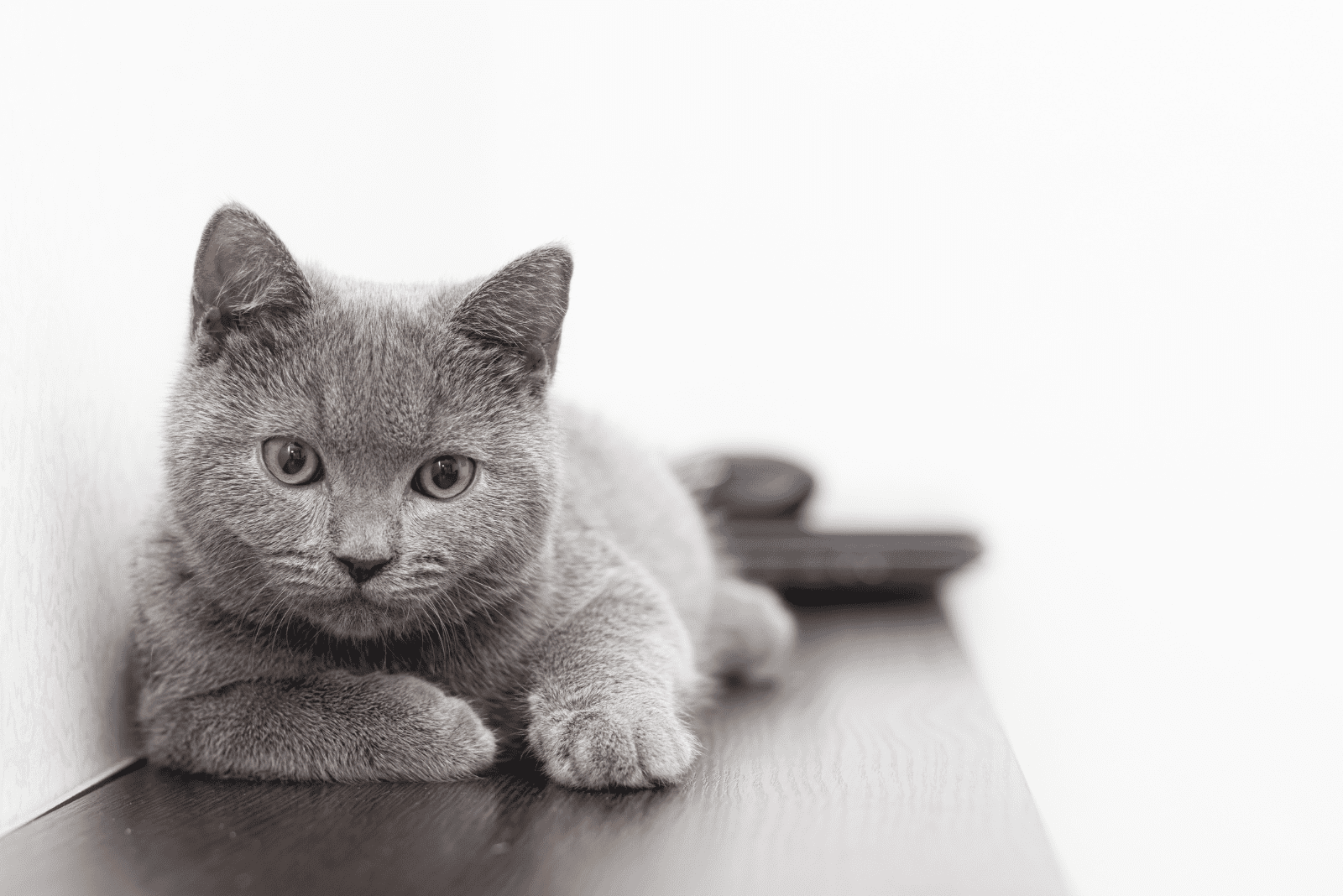
Blue smoke cats appear to be solid blue until you take a closer look.
Instead of having hairs that are entirely colored, smoke cats have white hair roots and colored hair tips. If the roots of your cat’s fur are dazzling white when you split it, your cat is a smoke cat!
The term “smoke” only refers to solid color cats. The smoke effect can also make the color of the coat appear paler and colder overall.
14. Solid White

The right allele combination will produce a pure white coat color. Despite not being true albinos, these cats are incredibly rare, and it’s doubtful that you will see one without having to get in touch with a specialist breeder.
The Turkish Van, American Curl, British Shorthair, Cornish Rex, Persian and many other cats can be pure white. The Persian cat breed variety, sometimes known as the chinchilla Persian, has the chinchilla coat pattern and can also be considered a white cat.
15. Mitted
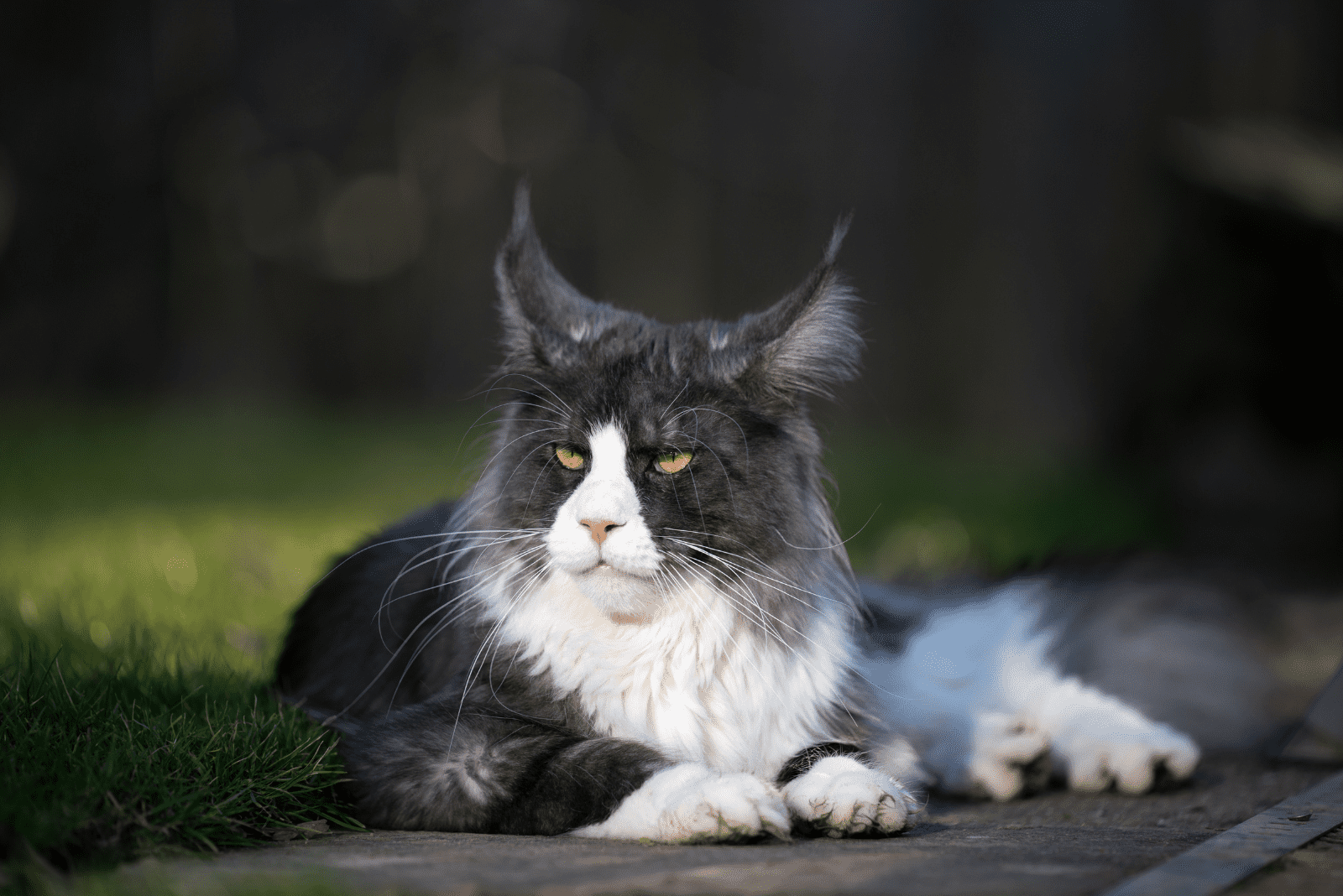
The appearance of the Mitted Ragdoll Cat is comparable to that of the colorpoint cat, but what sets it apart is that it has adorable snow-white ‘gloves’ on the front paws and ‘booties’ on the hind paws, hence the name ‘mitted’.
16. Tuxedo
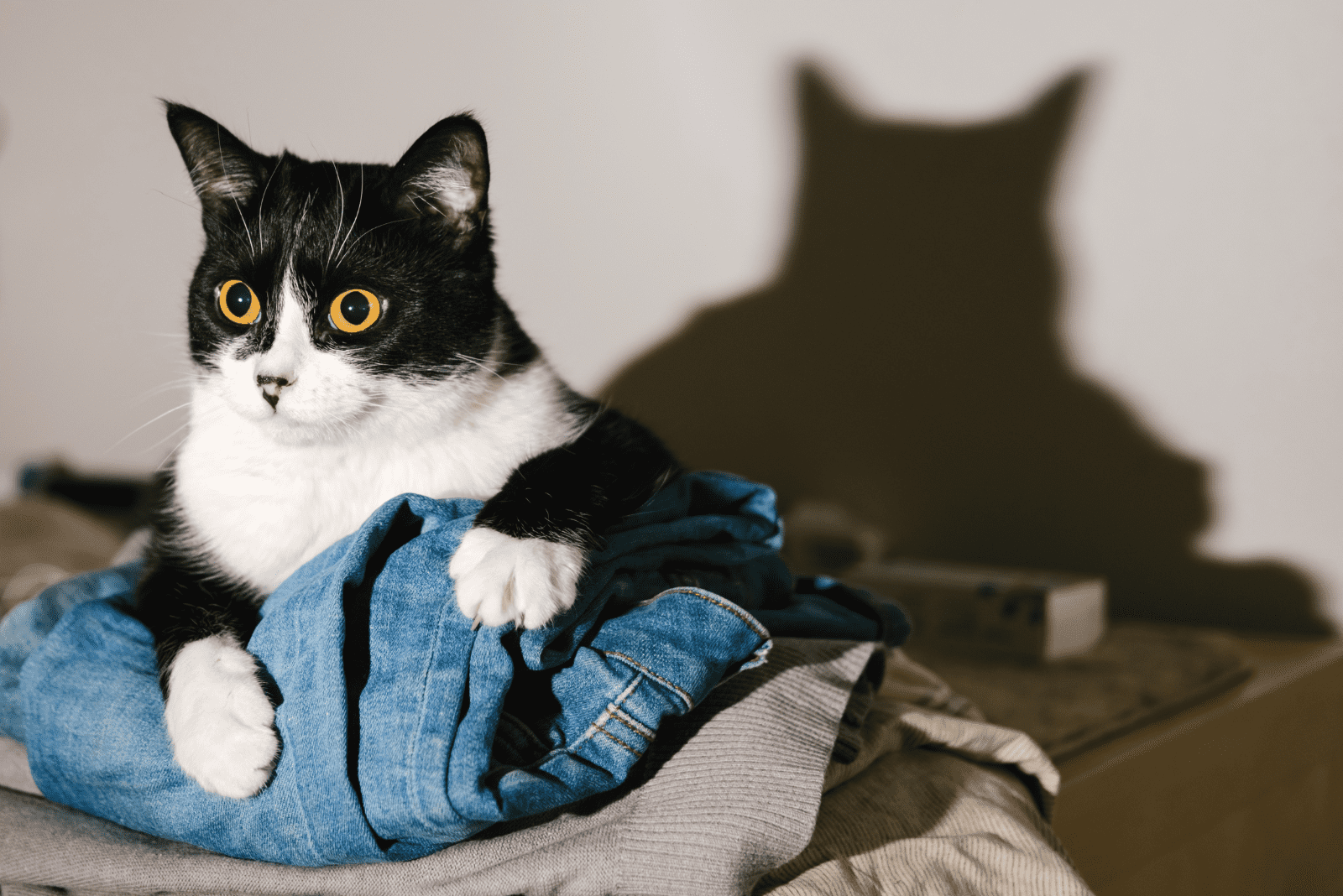
Bicolor cats, often known as piebald cats, have white fur mixed with fur of another color.
The bi-color pattern tuxedo cat is entirely black with a hint of white on its breast. They sometimes have white paws too. The overall style looks like a tuxedo, making these cats beautiful and distinguished-looking.
This pattern is especially interesting in Maine Coon tuxedo cats, as their long fur really makes the pattern stand out.
The majority of bicolored cats are Vans, and it’s uncommon to get enough color and the right pattern coverage to qualify as a tuxedo. Therefore, these cats are very rare!
17. Harlequin
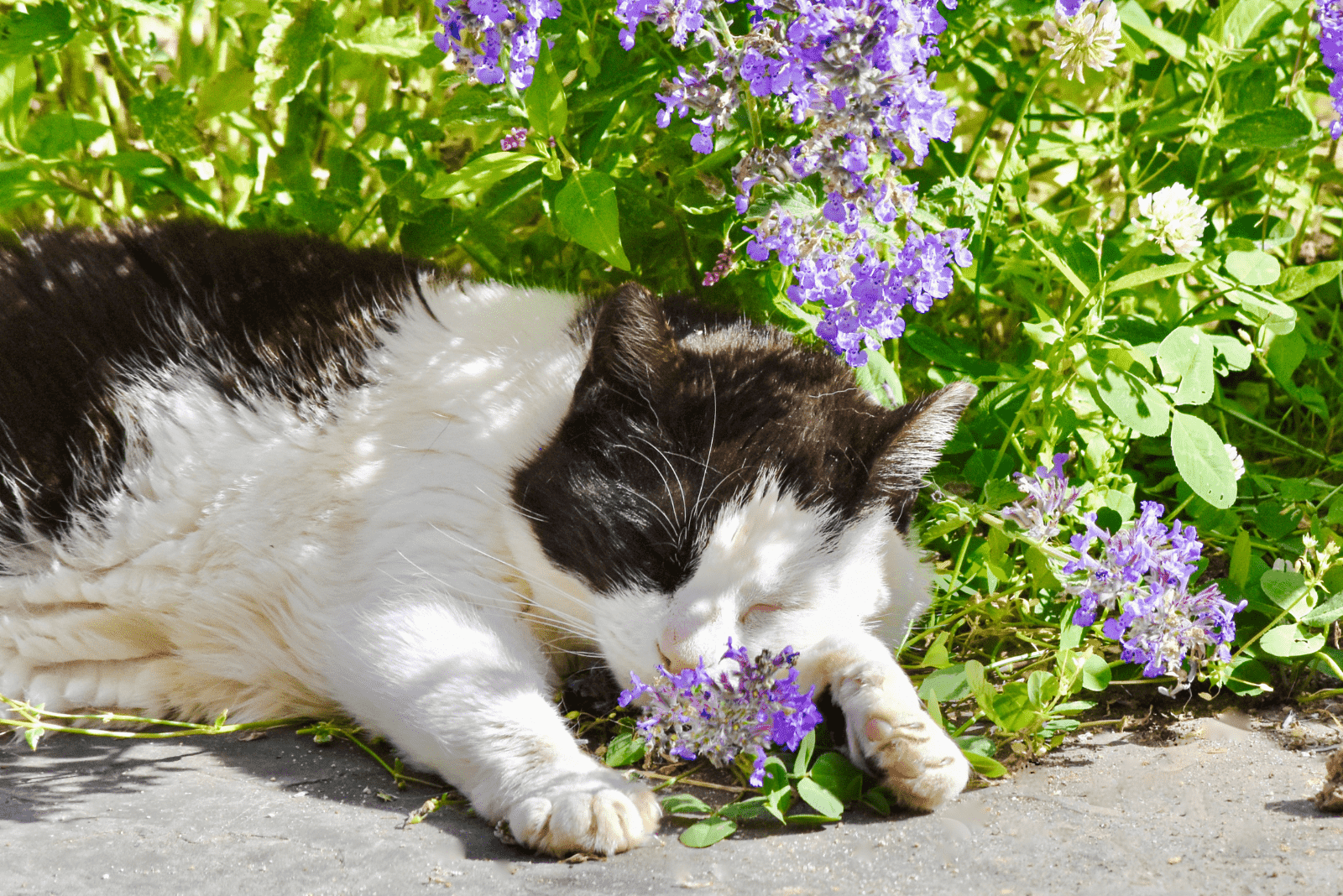
A cat that is primarily white with small, sporadic spots of a different color, typically on the body and legs, is said to be harlequin.
Cats that fit into these categories typically have a lot of white spotting, or more than 60% white fur. Harlequin bicolor cats can have any color mixed in with their white fur.
Cats without a distinguishable coat pattern and with roughly 50% white spotting are simply referred to as typical bicolor or piebald cats.
18. Charcoal
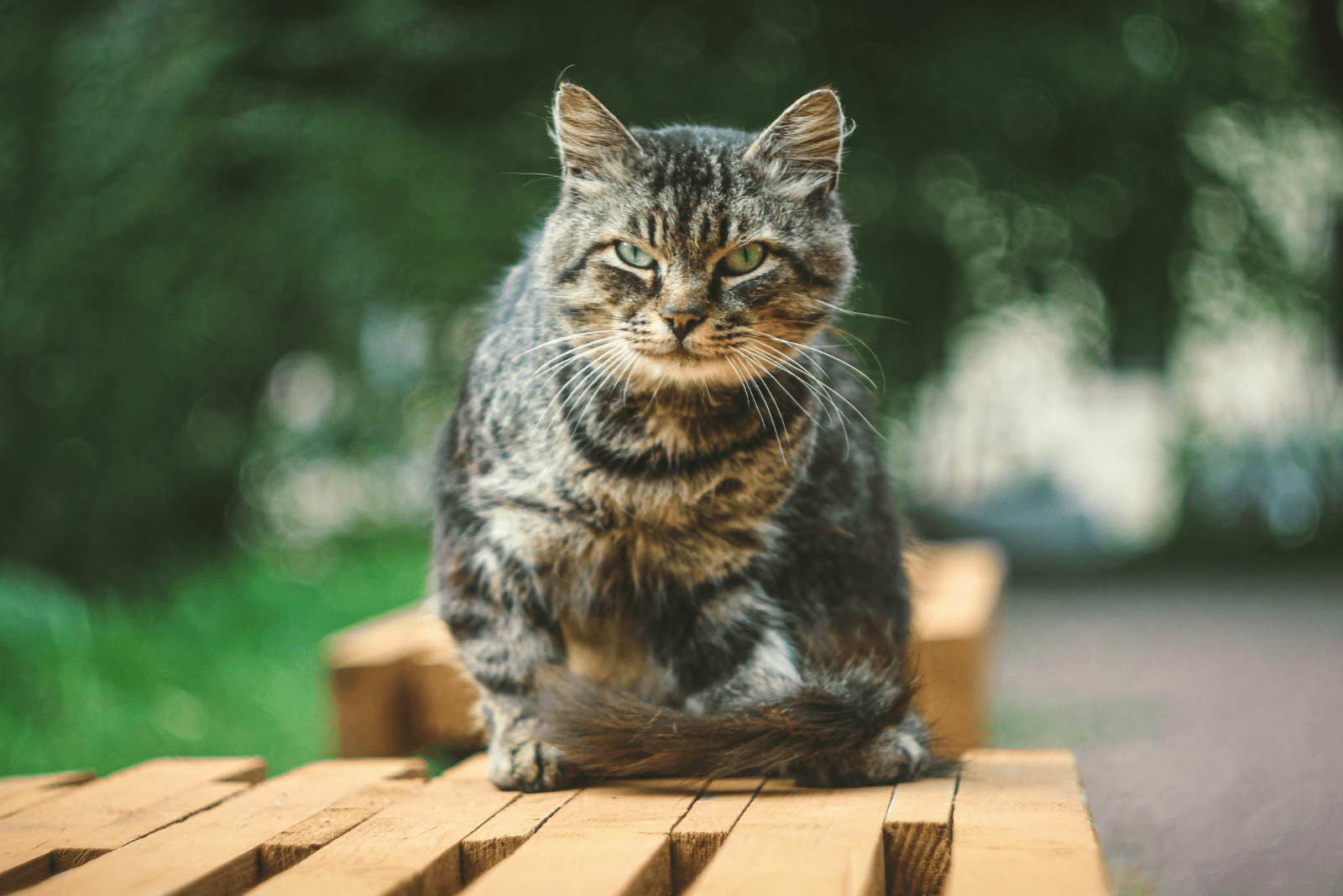
The Bengal breed includes a lovely charcoal variety, which is distinguished by a strong dorsal stripe and a darker facial ‘mask’.
Charcoal cats have a very dark spotted or marbled pattern with a dark gray/brown background.
Additionally, charcoal cats can have a wide dorsal stripe and a darker face mask, which are referred to as the “Zorro cape and mask”.
19. Marbled Tabby
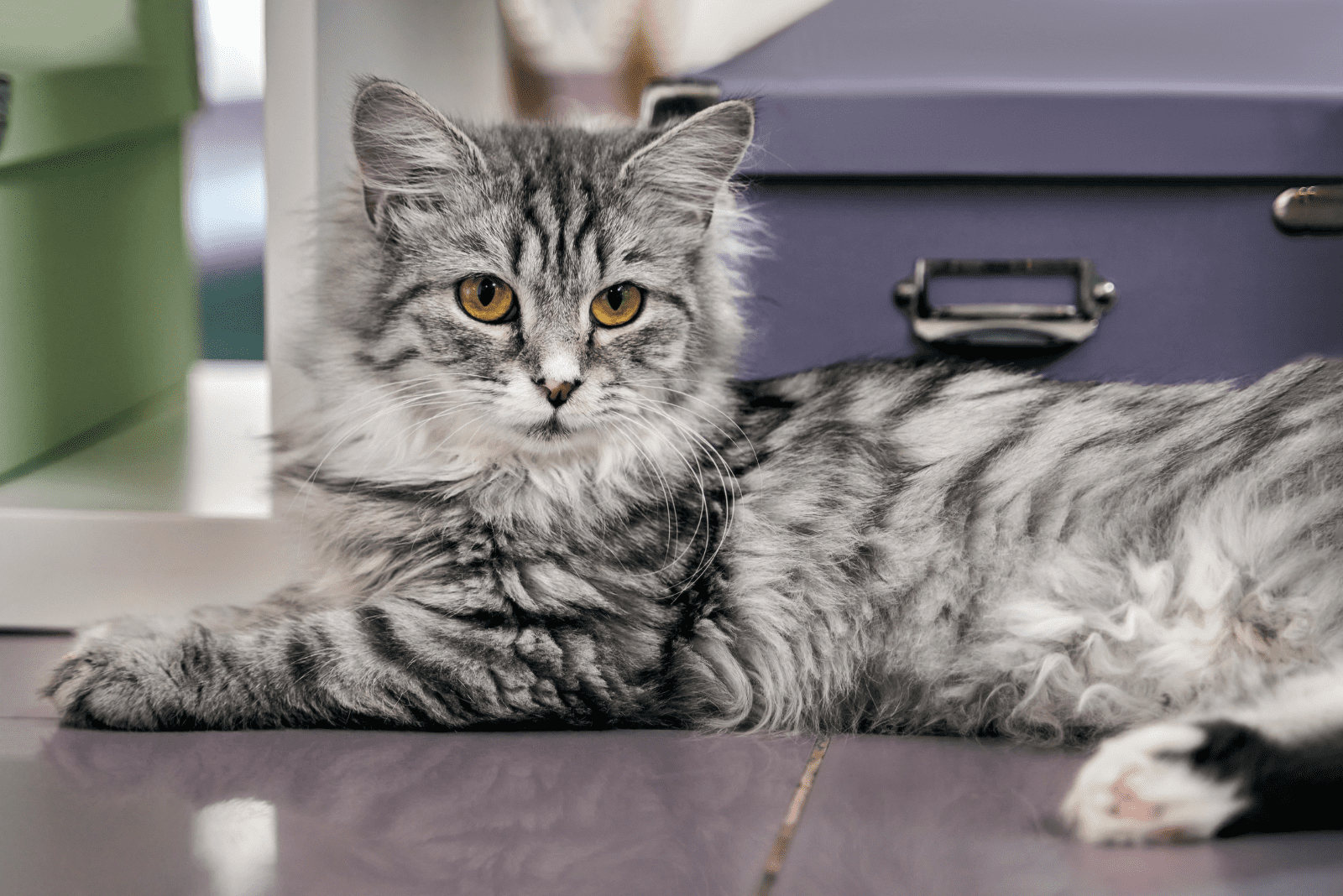
The marbled tabby, also known as the blotched or classic tabby, will have a characteristic “M” on their foreheads, as well as a very interesting coat pattern.
The classic tabby’s body is covered in a pattern of circular smudges. Like a marble cake, the traditional tabby has strong, swirling patterns down its sides.
20. Tortoiseshell

The tortoiseshell is a two-color design made up of red and black colors which are mottled or swirling. White may also be present, but it will only be a trace; there will be no larger white regions.
Dilute tortoiseshell cats are especially rare, for example blue, cream, and lilac tortoiseshell cats!
The tortoiseshell pattern is common in female cats, but it is highly rare in male cats because they need an extra X chromosome in order to have this pattern.
Suggested: The Beauty Of Dilute Tortoiseshell Cats – A Complete Guide
21. Calico
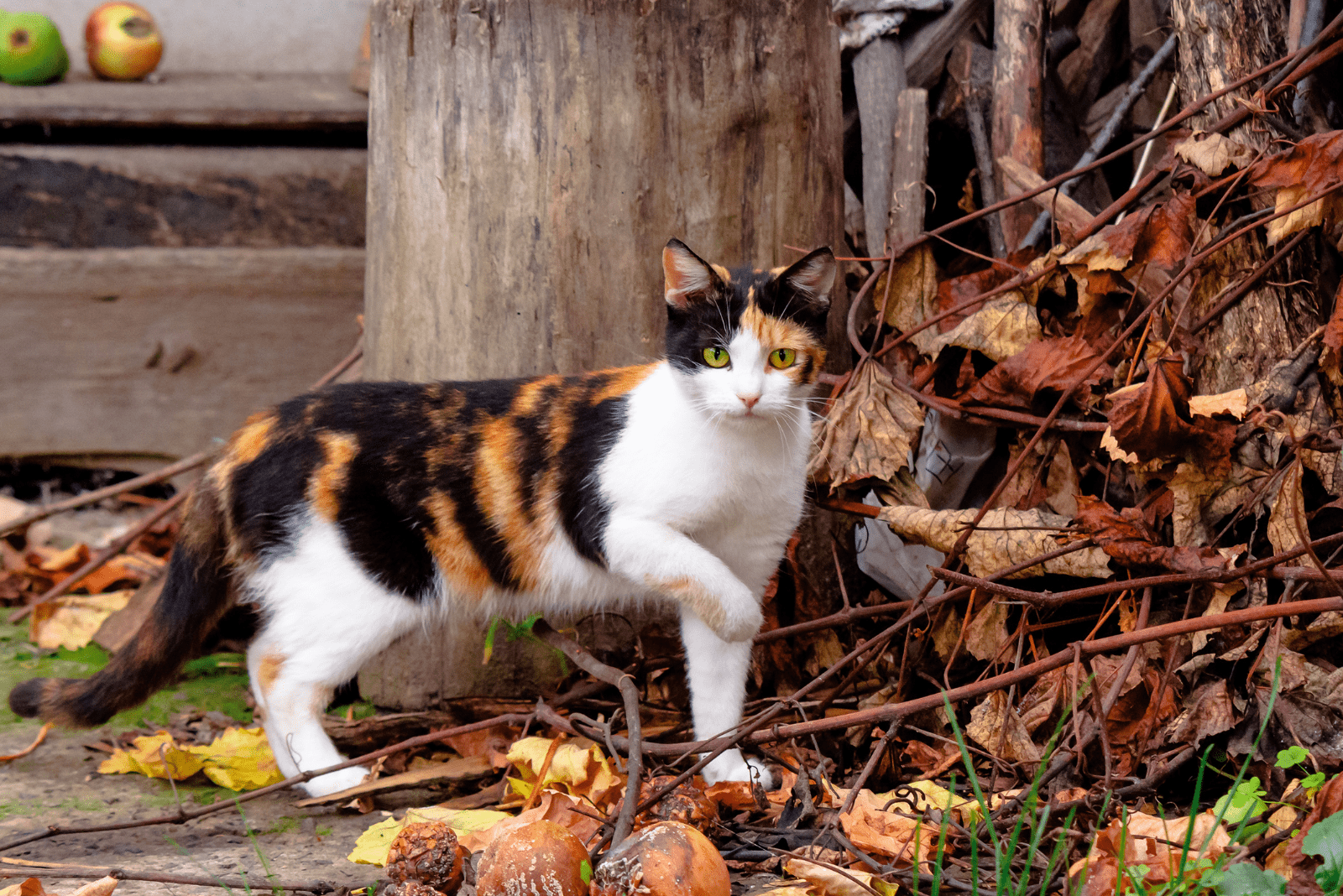
The colors in a calico cat’s coat are the same as those in the tortoiseshell, but they look more like patches as opposed to the colors being mixed or swirled together. Unlike tortoiseshell cats, calico cats have a lot of white fur, especially underneath.
Dilute calico cats, where the pattern is made of lilac, cream and blue, are especially rare.
Like the tortoiseshell, the calico pattern is much more common in female cats.
22. Spotted tabby
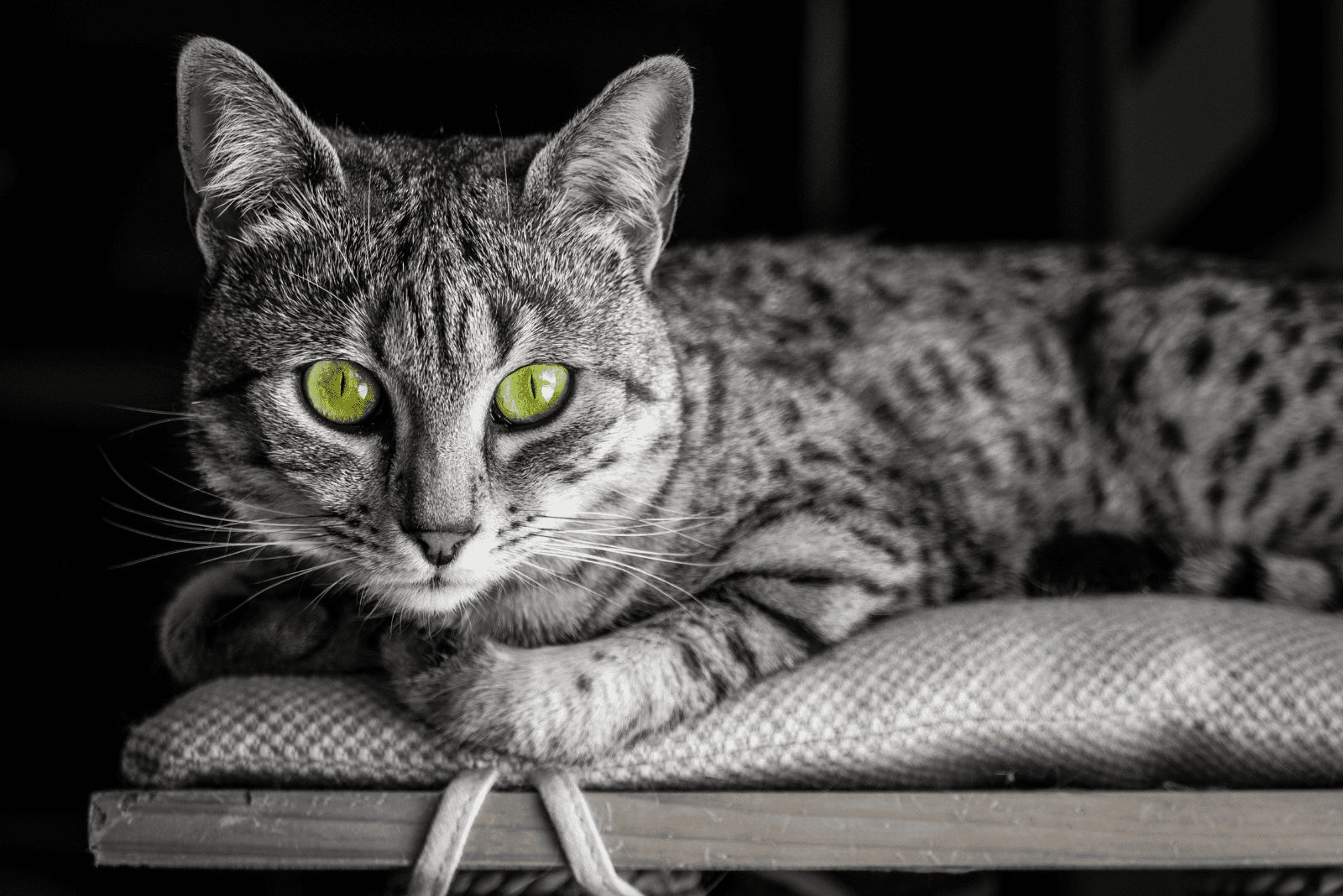
The flanks of a spotted tabby cat are covered in spots. These can be big patches or little ones and occasionally they resemble shattered mackerel stripes. They might be rosette-shaped, spherical, or oval.
A broken-patterned mackerel tabby pattern frequently resembles the spotted tabby pattern. It is unknown if the mackerel tabby gene or another gene is the origin of these patches.
The Bengal, Serengeti, Egyptian Mau, Arabian, and Maine Coon cat breeds are frequently seen with this less common variation of the tabby pattern.
23. Solid Black
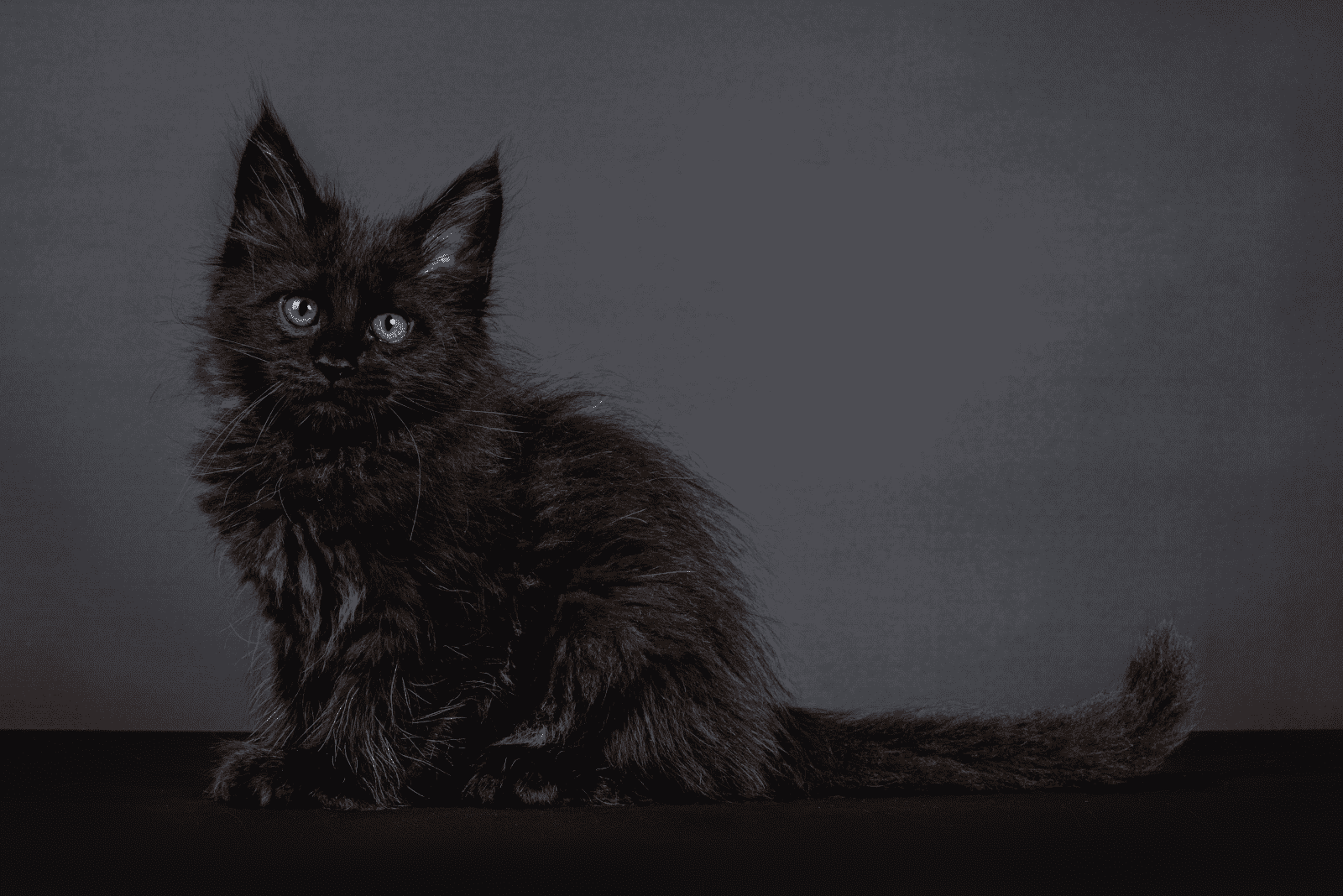
Any domestic cat can have black fur, regardless of breed. There are a lot of fascinating black cat spiritual meanings that are associated with this type of domestic cat, some of which are good, while others are not so good.
All cats of the Bombay breed are black, while the Persian cat, Maine Coon, Cornish Rex, American Shorthair, British Shorthair and many other cat breeds can have members that have solid black coats.
The most common eye color for black cats is golden, due to their high melanin pigment. However, you may also see:
FAQ
What Is The Least Popular Color Of Cat?
It is widely known that black cats are less likely to leave an animal shelter compared to cats whose coat color is not black. There is a lot of myth and stigma associated with black cats, sadly making their search for a proper home more of a challenge.
Is Fawn A Rare Cat Color?
Yes, seeing a cat with fawn-colored fur is very rare. This is due to the complex genetic background that these cats have. These cats are usually purebred and come from reputable breeders that selectively choose to produce cats with a fawn colored coat.
If you see a stray cat with a fawn-colored coat, you will know that this cat has won the genetic lottery and is extremely rare!
What Is The Rarest Color In Cats?
The rarest color pattern in cats is pure white and albino. Apart from these two, diluted colors (lilac, fawn, cream) are also somewhat rare, as well as modified dilute colors (taupe, caramel, and apricot).
What Are The Most Beautiful Cat Colors?
The answer to this is highly subjective! Some people like dark coat colors, while others prefer lighter hues. Personally, I find dilute coat colors to be the most beautiful ones. Lilac, fawn, and cream-colored cats always catch my attention!
What Color Is The Rarest Cat In The World?
The rarest cat in the world is thought to be the Sokoke cat. It is a natural breed, meaning it is not man-made. Its coat pattern is tabby, and the coat’s hue varies from a cozy light brown to a rich chestnut brown.
Final Thoughts
We are all familiar with the fact that cats come in a variety of colors and patterns because we have all seen plenty of them in our lifetimes. There are numerous different feline breeds, and many of them have easily distinguishable colors and markings.
The majority of cats have black, white and/or orange colored fur, but these three basic colors can be seen in different hues, and some of them are pretty uncommon.
Some rare cat colors and patterns include albino, solid white, blue, lilac, fawn, cream, taupe, caramel, apricot, cinnamon, chocolate, smoke, mitted, tuxedo, tortie, calico, harlequin, charcoal, and solid black, as well as the patched and spotted tabby.
They are all very pleasing to the eye, as I’m sure all of us cat lovers can agree! If you have a cat with a rare coat color and pattern combination, you’re very lucky!

